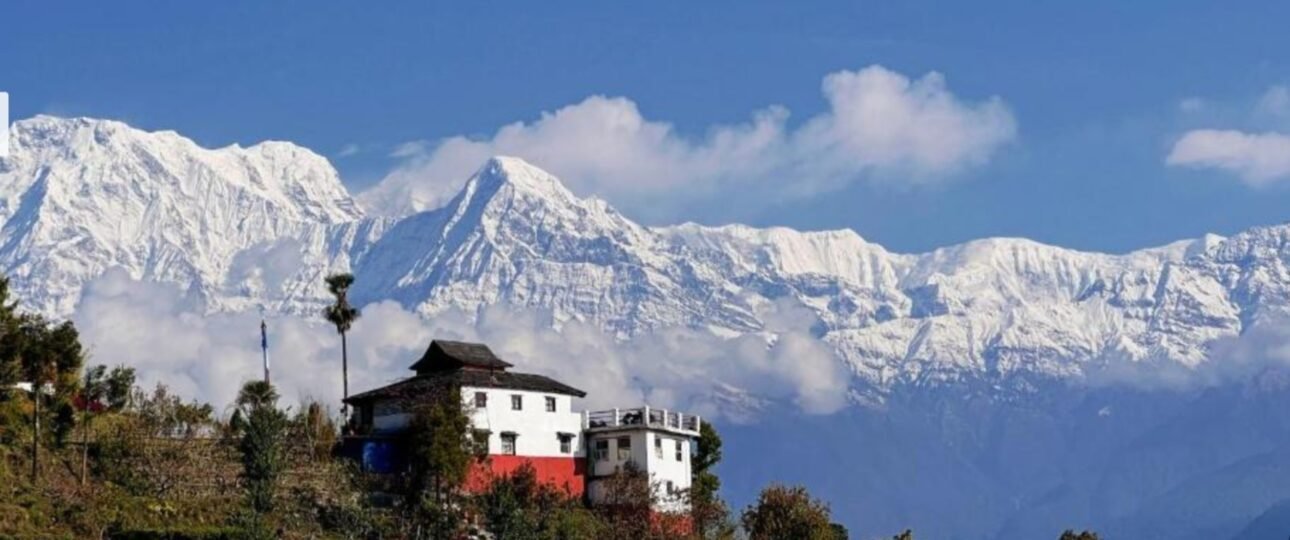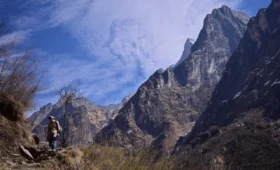Nepal, renowned as the land of the Himalayas, is globally recognized as a haven for mountaineers and trekkers. Within the majestic Nepal Himalaya, there exist over 1310 mountains that soar above 5500m/18,090ft to an astounding 8848m/29,028ft above sea level. Remarkably, all the peaks exceeding 8000m are situated on the periphery of the Indian and Eurasian continental plates, with eight of them gracing the Nepalese terrain. Among the world’s fourteen highest mountains, Nepal proudly claims eight, while Pakistan boasts five and Tibet, China, possesses one. With its impressive tally of eight mountains surpassing 8000m and a multitude of peaks exceeding 6000m available for climbing, Nepal unquestionably stands as the premier destination for mountain enthusiasts. In 1949, Nepal opened its mountains and peaks for climbing, and as of June 2018, the Nepal government, in collaboration with the Department of Tourism and Nepal Mountaineering Association, has granted access to 414 peaks for climbing. The pioneering expedition to conquer an 8000m peak occurred on June 3rd, 1950, when Maurice Herzog and Louis Lachenal triumphantly reached the summit of Mt. Annapurna. Just three years later, on May 29, 1953, Sir Edmund Hillary and Tenzing Norgay Sherpa accomplished an extraordinary feat by standing atop the world’s highest mountain, Everest. By 1960, a total of eighty-four expeditions, both large and small, had encountered the awe-inspiring Nepal Himalaya. Notably, Kanchenjunga and Makalu were conquered in 1955, followed by Lhotse and Manaslu in 1956, and Dhaulagiri in 1960.
Mt. Everest
Mt. Everest, recognized by China and Nepal, is the world’s highest peak with an elevation of 8,848 m (29,029 ft). Its status as the highest peak was established by a 1955 Indian survey and subsequently confirmed by a Chinese survey in 1975. Two major climbing routes, South and North, are used for commercial climbs to Everest. Among all the fourteen 8000m peaks in the world, Everest boasts the highest number of summiteers. Additionally, the trek to Everest base camp is a popular walking holiday, attracting over 35,000 visitors annually. This trek offers the opportunity to reach the base camp of the world’s highest mountain.
KanchenJunga
Kanchenjunga, previously believed to be the tallest mountain in the world, is located in the eastern region of Nepal, adjacent to India. This colossal mountain massif, along with its accompanying satellite peaks, consists of five prominent summits, namely Kanchenjunga Main, West, Central, South, and Khangbachen. Notably, Kanchenjunga ranks as the second-highest peak in Nepal and the third highest globally.
Lhotse
Lhotse, which ranks as the third highest mountain in Nepal, forms a part of the Everest massif and is linked to the latter peak through the south col. The climbing route for Lhotse is identical to that of Everest up to Camp 3. Apart from the primary summit of Lhotse, the mountain consists of two additional peaks, namely Lhotse Middle and Lhotse Shar. Climbers of Lhotse utilize the same base camp as those of Everest, and the climbing route is also shared until Camp 3.
Makalu
Makalu, standing at an elevation of 8,485m/27,838ft, is renowned as the fourth highest mountain in Nepal and the fifth highest mountain globally. Its steep pitches and knife-edge ridges contribute to its reputation as one of the most challenging eight thousand metres mountains. On May 15, 1955, Mr Jean Couzy from France achieved the remarkable feat of being the first to conquer Mt. Makalu via its west face. Following in his footsteps, Mr Ang Chepal Sherpa became the first Nepali climber to successfully summit Mt. Makalu on May 1, 1978.
Mt. Cho Oyu
Mt. Cho Oyu, the 6th highest mountain globally and the 5th highest in Nepal, is widely regarded as one of the safest and least challenging among all the peaks exceeding 8000 meters. Situated on the border of Nepal and Tibet, China, it is positioned in the eastern region of Nepal within the Khumbu Region. The North West ridge originating from Tibet serves as the preferred route for climbers attempting to conquer Cho Oyu. Notably, the mountain’s base camp is shared between Nepal and Tibet, China, with the majority of climbers opting to ascend from the north side, specifically the Tibet side.
Dhaulagiri
Dhaulagiri, reaching an impressive elevation of 8167m/26,795ft, holds the distinction of being the sixth highest mountain in Nepal and the seventh highest in the world. Situated in the western region of Nepal, this majestic peak witnessed its inaugural summit on May 13, 1960, when a collaborative group of European and Nepali climbers successfully conquered its Northeast ridge.
Mt. Manaslu
Mt Manaslu was initially summited on May 9, 1956 by a Japanese and Nepali Sherpa climber. In recent times, it has become a preferred preliminary peak for Everest. This is due to the Tibet side expeditions being uncertainly cancelled by the authorities in the past few years, leading many to choose Mt Manaslu as an 8000m training climb for Everest
Mt. Annapurna
Mt. Annapurna, the initial 8000m peak to be conquered, witnessed the ascent of Maurice Herzog and Louis Lachenal on June 3, 1950, thereby establishing the first human presence on such a towering summit. Amongst all the 8000m peaks in Nepal, Mt. Annapurna stands as the most arduous and perilous. Its treacherous exposed ridge and the constant threat of avalanches render the climb of Annapurna the deadliest among the top 10 highest mountains in Nepal.
Gyachung Kang
Gyachung Kang is a mountain in the Mahalangur Himal section of the Himalayas and is the highest peak between Cho Oyu (8,201 m) and Mount Everest (8,848 m). It lies on the border between Nepal and China. As the 15th highest peak in the world, it is also the co highest peak (with Gasherbrum III) that is not eight thousand metres tall; hence, it is far less well-known than the lowest of the eight-thousanders, which are only about 100 m (328 ft) higher. The peak’s lack of significant prominence (700 m) also contributes to its relative obscurity.
Annapurna II
Annapurna II is part of the Annapurna mountain range located in Nepal, and is the eastern anchor of the range.
In terms of elevation, isolation (distance to a higher summit, namely Annapurna I East Peak, 29.02 km or 18.03 mi) and prominence (2,437 m or 7,995 ft), Annapurna II does not rank far behind Annapurna I Main, which serves as the western anchor. It is a fully independent peak, despite the close association with Annapurna I Main which its name implies; it is, however, closely connected to the shorter Annapurna IV. Annapurna II is the 16th highest mountain in the world and second highest peak of the Annapurna mountain range.



